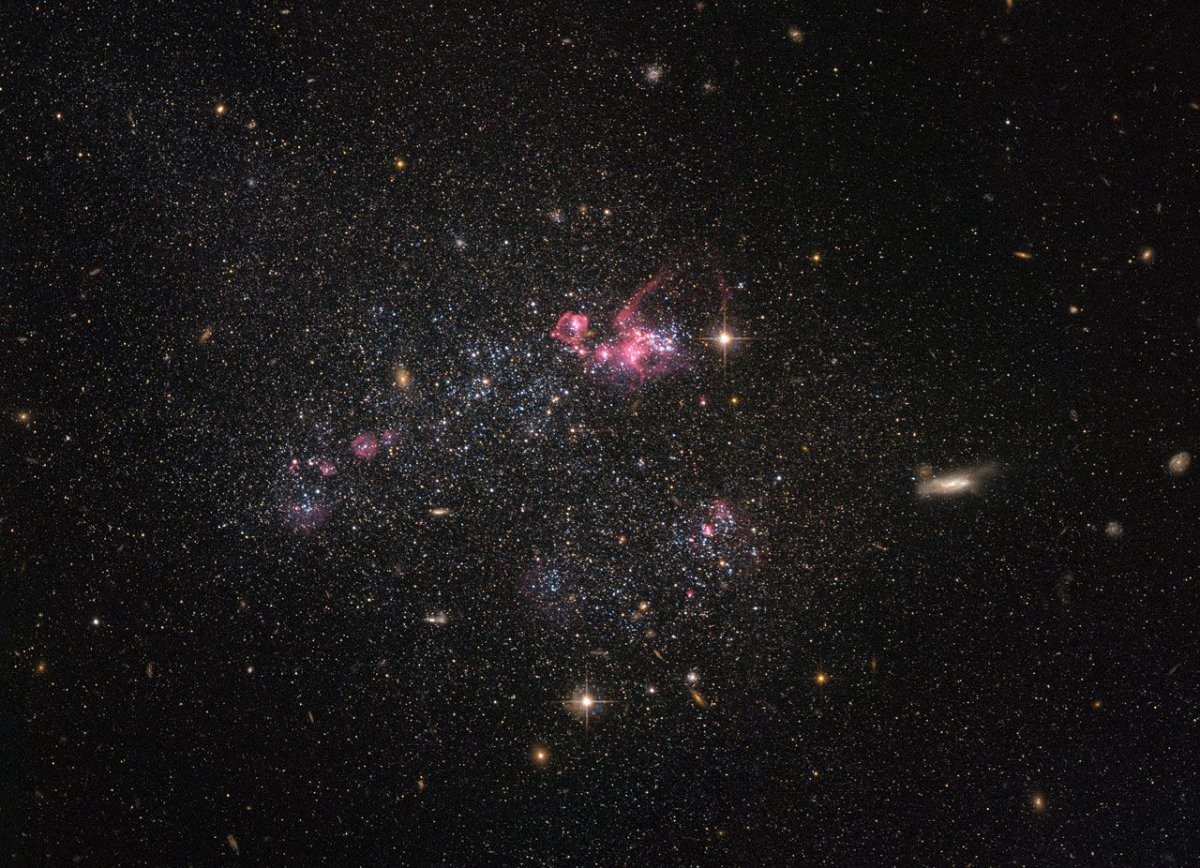Invisible dark matter makes up some 84 percent of the matter in the universe—but nobody really knows what it is. It doesn't have atoms, electrons or protons like the stuff that makes up the normal matter we see around us.
Physicists have long suspected primordial black holes could be behind dark matter. Now, interest in the ancient behemoths has piqued following the detection of gravitational waves from black hole mergers, the researchers wrote in the study published in the Monthly Notices of the Royal Astronomical Society. Now the team have run a suite of sophisticated computer simulations to probe the possibility.

Most black holes are created when enormous blazing stars at least three times the mass of the Sun implode. These stellar deaths are so powerful they warp gravity itself, creating a black hole in space. This violent process can take hundreds of millions of years.
But, some black holes are thought to have come from the early universe, long before these drawn-out star deaths could have finished. Instead, scientists think these "primordial" black holes might have been created, for example, when ancient clouds of gas collapsed.
Read more: Dark Matter Should Be Everywhere, but This Mysterious Galaxy Has None
Halos of dark matter are thought to envelop galaxies like the Milky Way. Stretching out far beyond the visible part of the galaxy, the dark matter halo contains the vast majority of the Milky Way's mass. Researchers performed computer simulations to figure out whether halos like this could be made up of primordial black holes.
Physicists think that black hole halos should have a different distribution of density to halos made from "exotic particles". These particles aren't made up of the normal subatomic particles we are used to—protons and electrons, for example. Dark matter is, therefore, exotic.
Faint dwarf galaxies offer a good place to look for these differences. They are relatively dim, so astronomers can find slight changes in light more easily than in brighter galaxies. Primordial black holes should result in slightly different sizes of stellar distributions, for example.
Read more: Whirling Galaxies Are Orderly and Neat, Defying Chaotic Dark Matter Cosmology
The computer simulations revealed these galaxies might indeed be harboring halos made up of primordial black holes. The team predict the black holes would need to have roughly two to fourteen times the mass of the Sun for them to make up a substantial chunk of the galaxy's dark matter—right around the mass expected for this kind of object.
The authors caution, however, that their work is still inconclusive. Although it shows that primordial black holes could make up dark matter, the race to pin down the elusive stuff is far from over.
Uncommon Knowledge
Newsweek is committed to challenging conventional wisdom and finding connections in the search for common ground.
Newsweek is committed to challenging conventional wisdom and finding connections in the search for common ground.
About the writer
Katherine Hignett is a reporter based in London. She currently covers current affairs, health and science. Prior to joining Newsweek ... Read more
To read how Newsweek uses AI as a newsroom tool, Click here.








